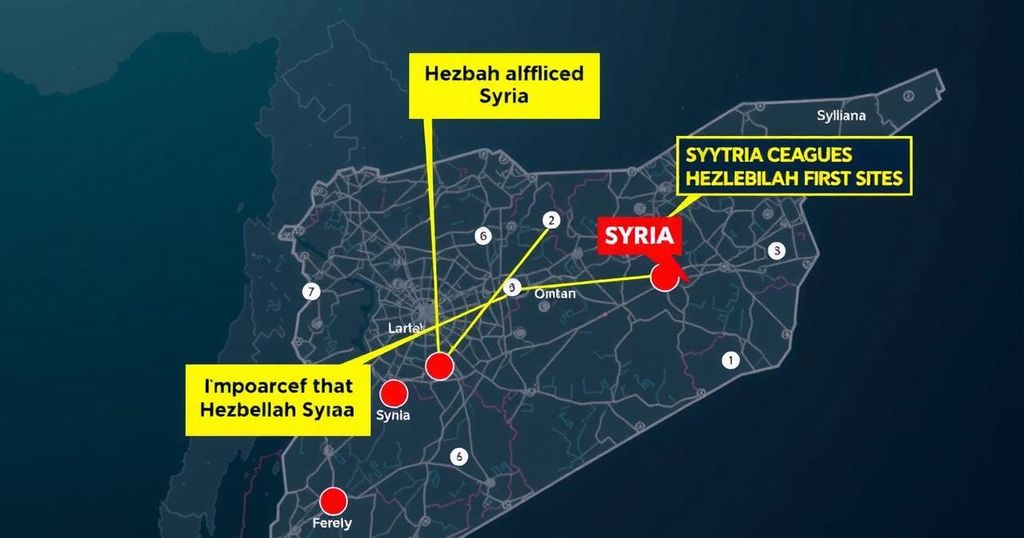Israel Conducts Airstrikes on Hezbollah, Testing Fragile Ceasefire

Israel has struck Hezbollah smuggling sites in Syria, defying a newly established ceasefire that began on November 27, 2024. Displaced residents are gradually returning home as sporadic violence persists. Israeli officials claim the attacks are justified due to ongoing violations by Hezbollah, while broader regional turmoil continues to escalate, affecting the stability of the ceasefire agreement.
The Israeli military conducted airstrikes on Hezbollah weapons smuggling sites situated along the Syria-Lebanon border, citing violations of a recent ceasefire agreement that commenced on November 27, 2024. Despite this truce, which was negotiated by the United States and France, sporadic violence has continued in the region. As residents returned to their homes amidst the fragile ceasefire, Israeli forces claimed that the attacks were necessary to prevent further escalation, accusing Hezbollah of ongoing violations. This situation is complicated by broader regional unrest, culminating in Syrian insurgents launching an unexpected offensive in Aleppo, thereby exacerbating uncertainties in the conflict-ridden area.
Israeli officials reiterated their stance that the military retains the right to respond to any perceived threats or breaches of the ceasefire, which is intended to be a two-month period allowing both parties to withdraw and de-escalate tensions. Following the ceasefire, approximately 1.2 million displaced people began to return to various villages, despite military warnings against re-entering certain risky areas. Reports indicated that an Israeli drone struck a vehicle in a southern Lebanese village, resulting in casualties, underscoring the tenuous nature of the current situation.
The Israeli attacks are part of a larger context of heightened violence that has characterized the ongoing conflict with Hezbollah, which reignited in October 2023, after the group began its aggression against Israeli positions. The continued hostilities have had devastating consequences, with significant loss of life on both sides, including numerous civilians. The developments within Lebanon and across the border in Syria indicate an ongoing struggle for stability and peace amid persistent confrontations among various militant factions.
The recent resurgence of conflict between Israel and Hezbollah can be traced back to October 8, 2023, when Hezbollah commenced attacks in solidarity with Hamas, which had launched a significant assault on Israel. This initiated a prolonged period of cross-border warfare, culminating in extensive Israeli military operations designed to neutralize Hezbollah’s capabilities. The fragile ceasefire currently in place reflects the complexity of regional politics and the influence of external powers, such as the United States and France, in attempting to broker peace. Despite the ceasefire’s implementation, tensions remain high, and confrontations continue to occur, complicating the humanitarian situation for the many displaced individuals seeking to return to their homes amid warnings of continued risk.
The situation in Israel and Lebanon remains precarious as Israeli airstrikes on Hezbollah targets challenge the terms of a fragile ceasefire. The ongoing violence and escalation of military operations indicate a broader regional instability, particularly as Syrian insurgents exploit the chaos. Although many displaced individuals are beginning to return home, the potential for renewed conflict looms, casting uncertainty over the region’s future. Continuous monitoring of the ceasefire’s adherence and the responses from both parties will be crucial in determining whether peace can be achieved in the coming months.
Original Source: apnews.com








